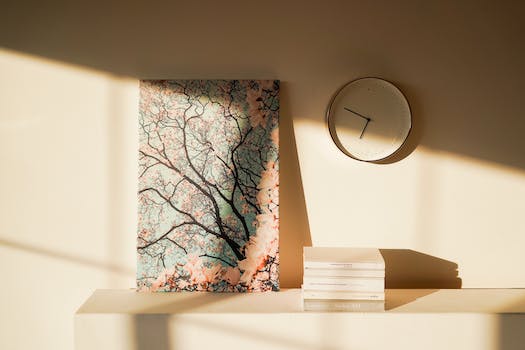

-
Table of Contents
Where creativity meets structure.
Introduction
The intersection of art and architecture is a fascinating and dynamic field that explores the relationship between these two creative disciplines. It involves the integration of artistic elements and principles into architectural design, blurring the boundaries between functional structures and aesthetic expressions. This intersection allows architects to incorporate artistic concepts, such as form, color, texture, and composition, into their designs, resulting in visually captivating and thought-provoking buildings and spaces. Additionally, art can also be used to enhance the experience of architectural spaces, creating a harmonious and immersive environment for the occupants. The intersection of art and architecture offers endless possibilities for innovation, creativity, and the creation of meaningful and impactful built environments.
The Influence of Art on Architectural Design
The Influence of Art on Architectural Design
Art and architecture have long been intertwined, with each influencing and inspiring the other. Throughout history, artists and architects have collaborated to create stunning structures that not only serve a functional purpose but also evoke emotions and leave a lasting impact on those who experience them. This article explores the profound influence of art on architectural design, highlighting how artistic elements have shaped and transformed the built environment.
One of the most significant ways in which art has influenced architectural design is through the use of form and aesthetics. Artists have always been concerned with creating visually appealing compositions, and architects have drawn inspiration from these principles to design buildings that are not only functional but also visually striking. From the ancient Greeks who incorporated intricate sculptures into their temples to the modernist architects who embraced clean lines and geometric shapes, art has played a pivotal role in shaping architectural aesthetics.
Moreover, art has also influenced architectural design by challenging traditional norms and pushing boundaries. Throughout history, artists have been at the forefront of innovation, experimenting with new materials, techniques, and concepts. Architects have often looked to these artistic innovations to inform their own designs, resulting in groundbreaking architectural achievements. For example, the use of steel and glass in modern architecture was heavily influenced by the artistic movement of the early 20th century, which embraced industrial materials and celebrated the beauty of simplicity.
In addition to form and materials, art has also influenced architectural design through the incorporation of symbolism and storytelling. Artists have long used their work to convey messages and evoke emotions, and architects have adopted this approach to create buildings that tell a story or represent a particular idea. From the grand cathedrals of Europe, which depict biblical scenes through stained glass windows and intricate sculptures, to contemporary buildings that use abstract forms to convey a sense of movement or energy, art has provided architects with a powerful tool for communicating meaning through design.
Furthermore, art has influenced architectural design by blurring the boundaries between the two disciplines. In recent years, there has been a growing trend of architects collaborating with artists to create immersive and experiential spaces. These collaborations often result in installations or temporary structures that challenge traditional notions of architecture and invite viewers to engage with the built environment in new and exciting ways. By merging art and architecture, these projects push the boundaries of what is possible and create unique experiences that transcend traditional definitions of space.
In conclusion, the influence of art on architectural design is undeniable. From shaping aesthetics and pushing boundaries to conveying meaning and blurring disciplinary boundaries, art has played a crucial role in transforming the built environment. Architects continue to draw inspiration from the artistic world, incorporating elements of form, materials, symbolism, and collaboration into their designs. As art and architecture continue to intersect, we can expect to see even more innovative and awe-inspiring structures that challenge our perceptions and leave a lasting impact on society.
Exploring the Role of Architecture in Art Exhibitions

The intersection of art and architecture is a fascinating topic that has been explored by many scholars and artists throughout history. One area where these two disciplines come together is in art exhibitions. In this section, we will explore the role of architecture in art exhibitions and how it enhances the viewer's experience.
Architecture plays a crucial role in setting the stage for art exhibitions. The design of the exhibition space can greatly impact how the artwork is perceived and appreciated. The layout, lighting, and overall ambiance of the space can create a specific atmosphere that complements the artwork on display. For example, a minimalist and clean design can enhance the viewing experience of contemporary art, while a more ornate and grandiose design may be more suitable for classical art.
The architecture of the exhibition space also influences the flow of the visitors. The placement of walls, corridors, and entrances can guide the viewer through the exhibition in a specific order, allowing them to experience the artwork in a curated and intentional way. This spatial arrangement can create a narrative or thematic progression, leading the viewer from one artwork to the next, enhancing their understanding and appreciation of the art.
Lighting is another crucial aspect of architecture in art exhibitions. The way light is used can dramatically affect how the artwork is perceived. Natural light, for example, can bring out the colors and textures of a painting, while artificial lighting can create dramatic effects and highlight specific details. The careful consideration of lighting in the architectural design of an exhibition space can greatly enhance the viewer's experience and create a more immersive environment.
Furthermore, architecture can also be used to create a dialogue between the artwork and the surrounding environment. The juxtaposition of contemporary art in a historical building, for instance, can create an interesting contrast that adds depth and meaning to the artwork. The architectural elements of the space, such as columns, arches, or windows, can become part of the exhibition, interacting with the artwork and influencing its interpretation.
In recent years, there has been a growing trend of incorporating temporary or site-specific installations in art exhibitions. These installations often blur the boundaries between art and architecture, creating immersive and interactive experiences for the viewers. The architectural design of these installations becomes an integral part of the artwork itself, shaping the viewer's perception and engagement with the piece.
In conclusion, the role of architecture in art exhibitions is multifaceted and essential. It sets the stage for the artwork, influences the flow of visitors, enhances the viewing experience through lighting, creates a dialogue with the surrounding environment, and even becomes part of the artwork itself in site-specific installations. The careful consideration of architectural design in art exhibitions can greatly enhance the viewer's understanding, appreciation, and overall experience of the artwork on display. The intersection of art and architecture in this context is a testament to the power of collaboration between different artistic disciplines and the potential for creating truly immersive and transformative experiences for the audience.
The Integration of Artistic Elements in Architectural Structures
The integration of artistic elements in architectural structures is a fascinating aspect of the intersection between art and architecture. Throughout history, architects have sought to incorporate various forms of art into their designs, creating visually stunning and thought-provoking buildings. This integration not only enhances the aesthetic appeal of the structures but also adds depth and meaning to the overall architectural experience.
One way in which artistic elements are integrated into architectural structures is through the use of sculptures and statues. These three-dimensional artworks are strategically placed within the building's exterior or interior, serving as focal points that capture the attention of viewers. Sculptures can depict a wide range of subjects, from historical figures to abstract forms, and can be made from various materials such as stone, metal, or even glass. By incorporating sculptures into their designs, architects create a sense of harmony between the built environment and the art that inhabits it.
Another way in which art is integrated into architecture is through the use of murals and mosaics. These two-dimensional artworks are often found on the walls or ceilings of buildings, adding color, texture, and narrative to the architectural space. Murals can depict scenes from history, mythology, or everyday life, while mosaics are composed of small, colored tiles that form intricate patterns or images. Both murals and mosaics serve to enhance the visual experience of the architecture, creating a sense of storytelling and cultural richness.
In addition to sculptures, statues, murals, and mosaics, architects also integrate art into their designs through the use of stained glass windows. These windows are made by assembling small pieces of colored glass together, creating intricate patterns or images that are illuminated by natural or artificial light. Stained glass windows not only add a vibrant and ethereal quality to the architectural space but also serve as a means of storytelling and religious symbolism. They can depict biblical scenes, saints, or abstract patterns that evoke a sense of spirituality and transcendence.
Furthermore, architects often collaborate with artists to create site-specific installations within architectural structures. These installations can take various forms, such as large-scale sculptures, interactive artworks, or multimedia presentations. By working closely with artists, architects can create immersive and engaging experiences for visitors, blurring the boundaries between art and architecture. These installations often challenge traditional notions of space and perception, inviting viewers to interact with the built environment in new and unexpected ways.
The integration of artistic elements in architectural structures not only enhances the visual appeal of the buildings but also adds layers of meaning and cultural significance. By incorporating sculptures, murals, mosaics, stained glass windows, and site-specific installations, architects create spaces that are not only functional but also thought-provoking and emotionally resonant. The intersection of art and architecture allows for a dynamic and enriching experience, where the boundaries between the two disciplines blur, and creativity knows no limits. Whether it is a historic cathedral adorned with stained glass windows or a contemporary museum featuring site-specific installations, the integration of art in architecture continues to captivate and inspire audiences around the world.
Q&A
1. How does art influence architecture?
Art influences architecture by introducing new concepts, aesthetics, and innovative design approaches. It can inspire architects to think creatively and push boundaries, resulting in unique and visually appealing structures.
2. How does architecture influence art?
Architecture provides a physical space for art to be displayed and experienced. It can shape the way art is perceived and interacted with, influencing the viewer's emotional response. Additionally, architectural elements such as light, scale, and materials can inspire artists and inform their creative process.
3. What are some examples of the intersection between art and architecture?
Examples of the intersection between art and architecture include installations within architectural spaces, such as sculptures or murals integrated into building facades. Additionally, architectural designs that prioritize aesthetics and incorporate artistic elements, such as the Guggenheim Museum in Bilbao, Spain, showcase the close relationship between art and architecture.
Conclusion
The intersection of art and architecture is a dynamic and influential field that has shaped the built environment throughout history. It is a symbiotic relationship where art enhances the aesthetic appeal of architecture, while architecture provides a canvas for artistic expression. This intersection has resulted in iconic structures that are not only functional but also visually captivating. The integration of art into architecture allows for the creation of spaces that evoke emotions, inspire creativity, and challenge traditional design norms. It is through this collaboration that the boundaries between art and architecture are blurred, leading to innovative and thought-provoking designs. Overall, the intersection of art and architecture is a powerful force that continues to shape our physical surroundings and enrich our lives.












